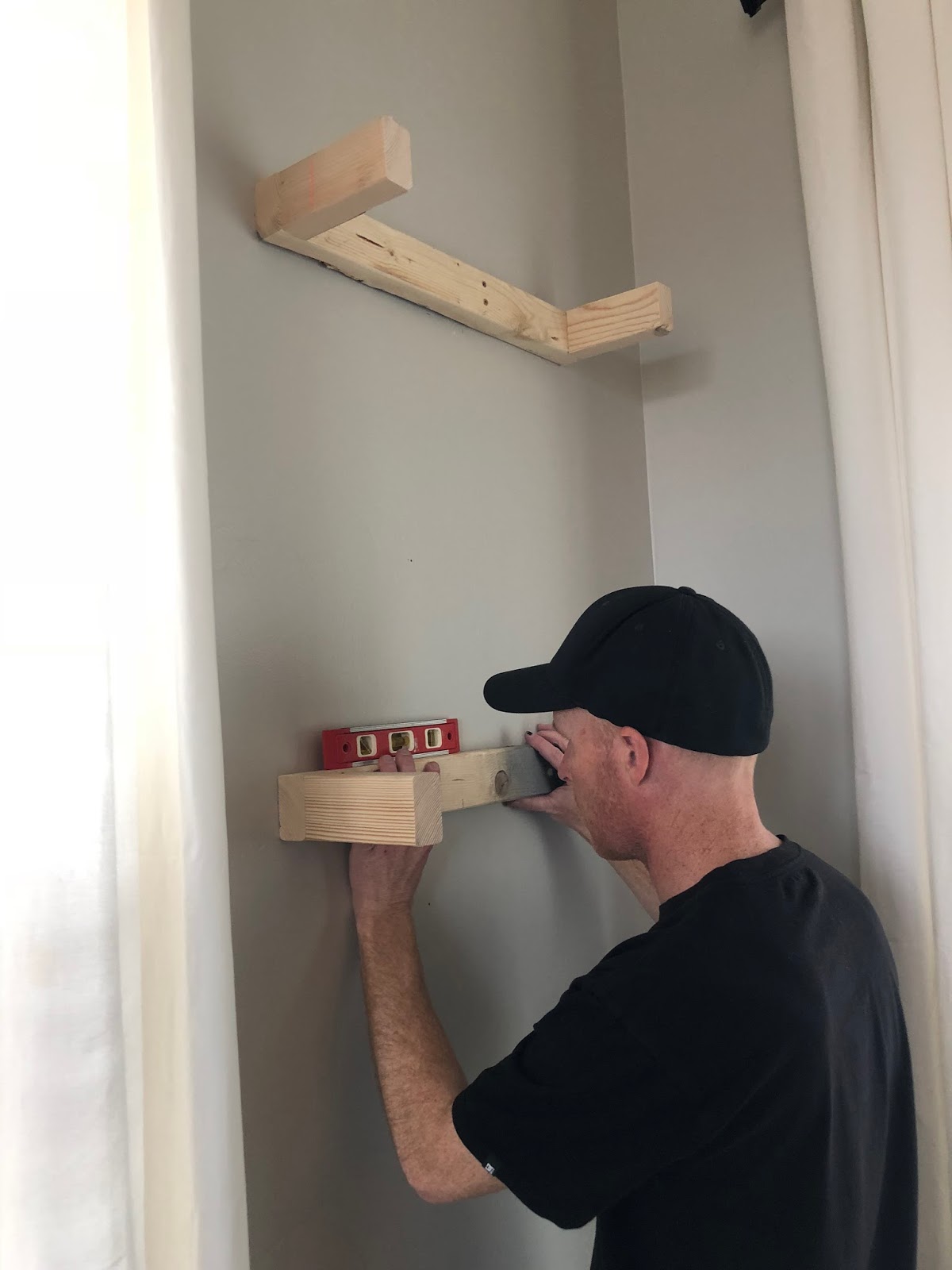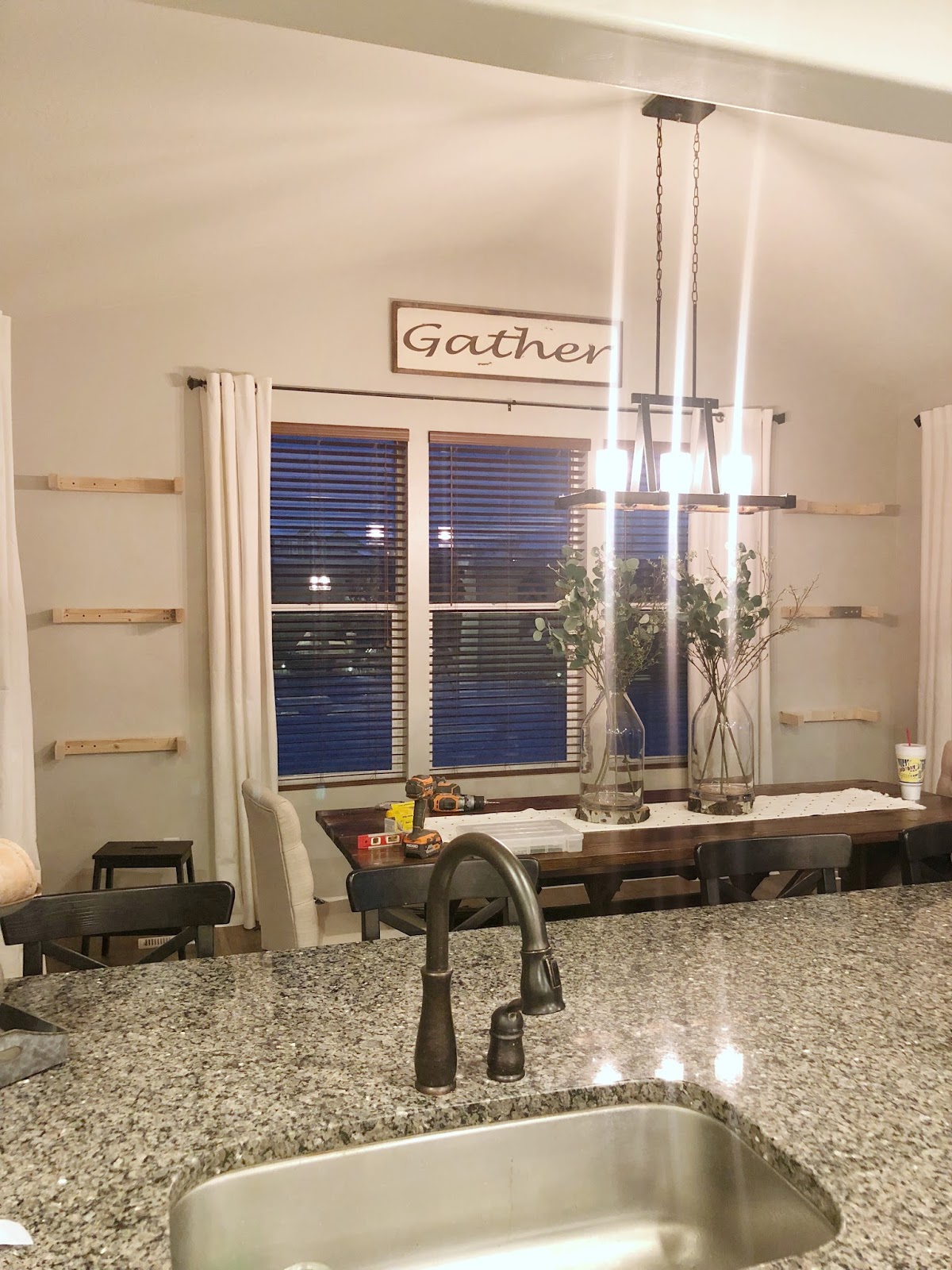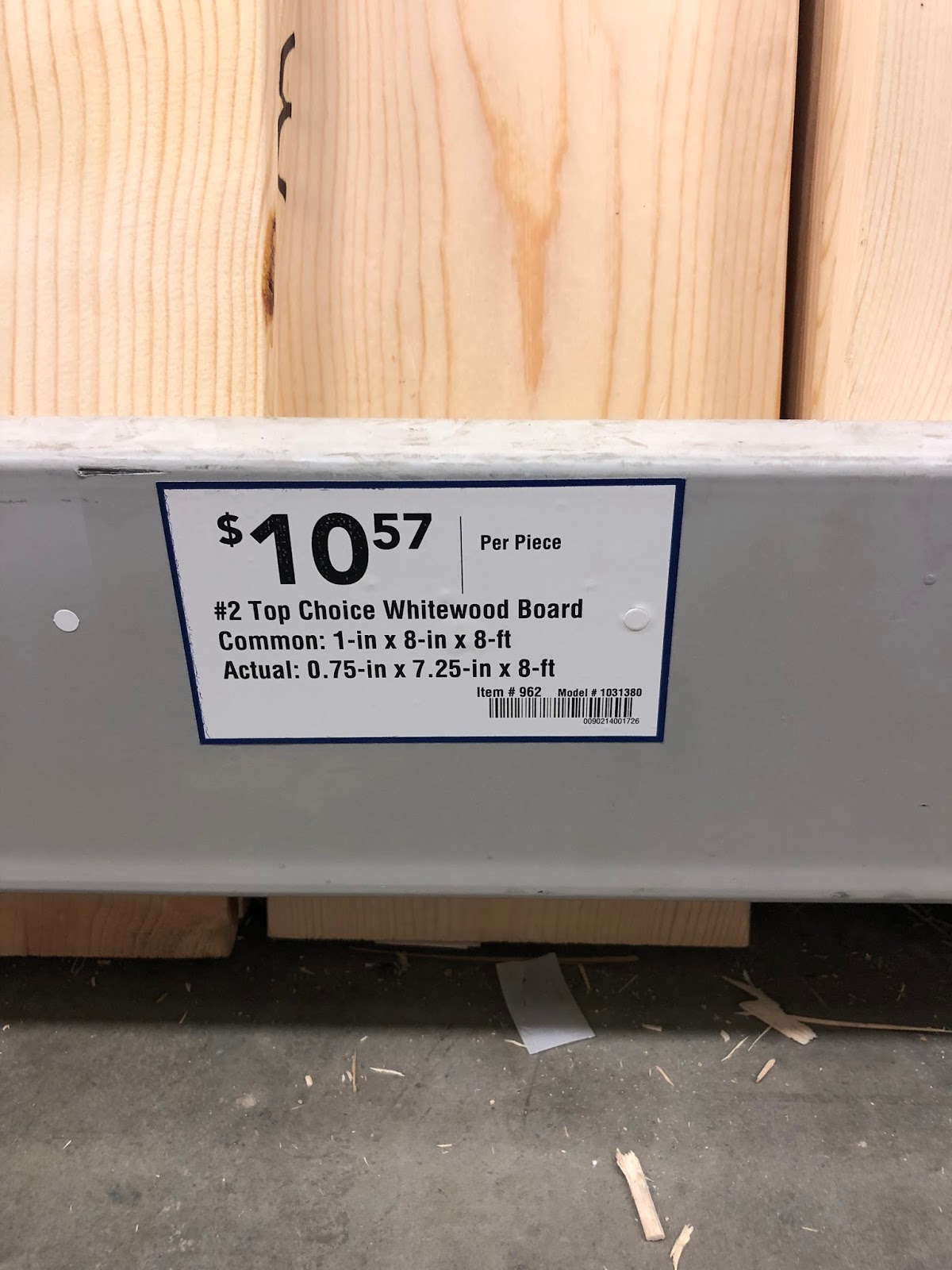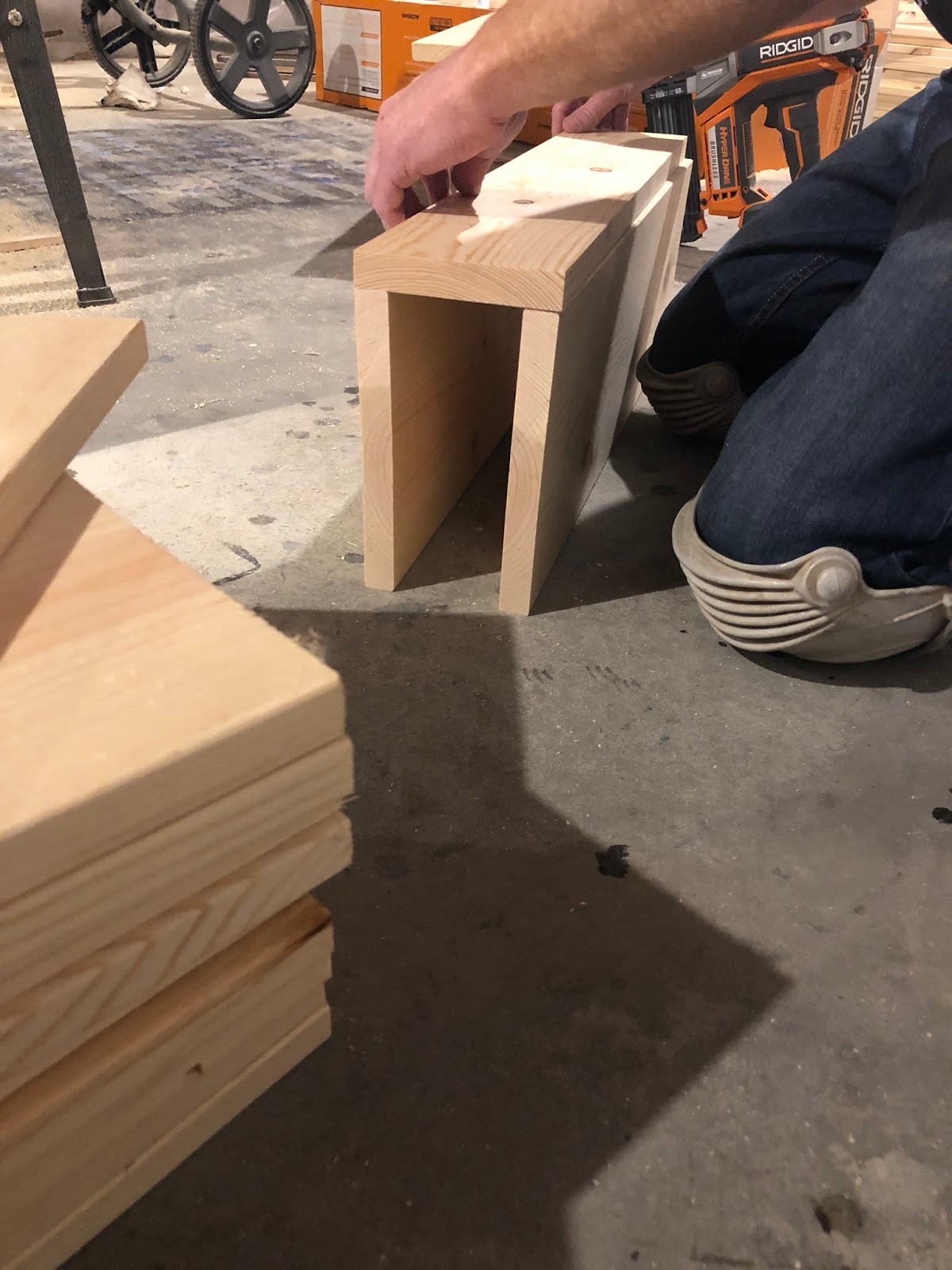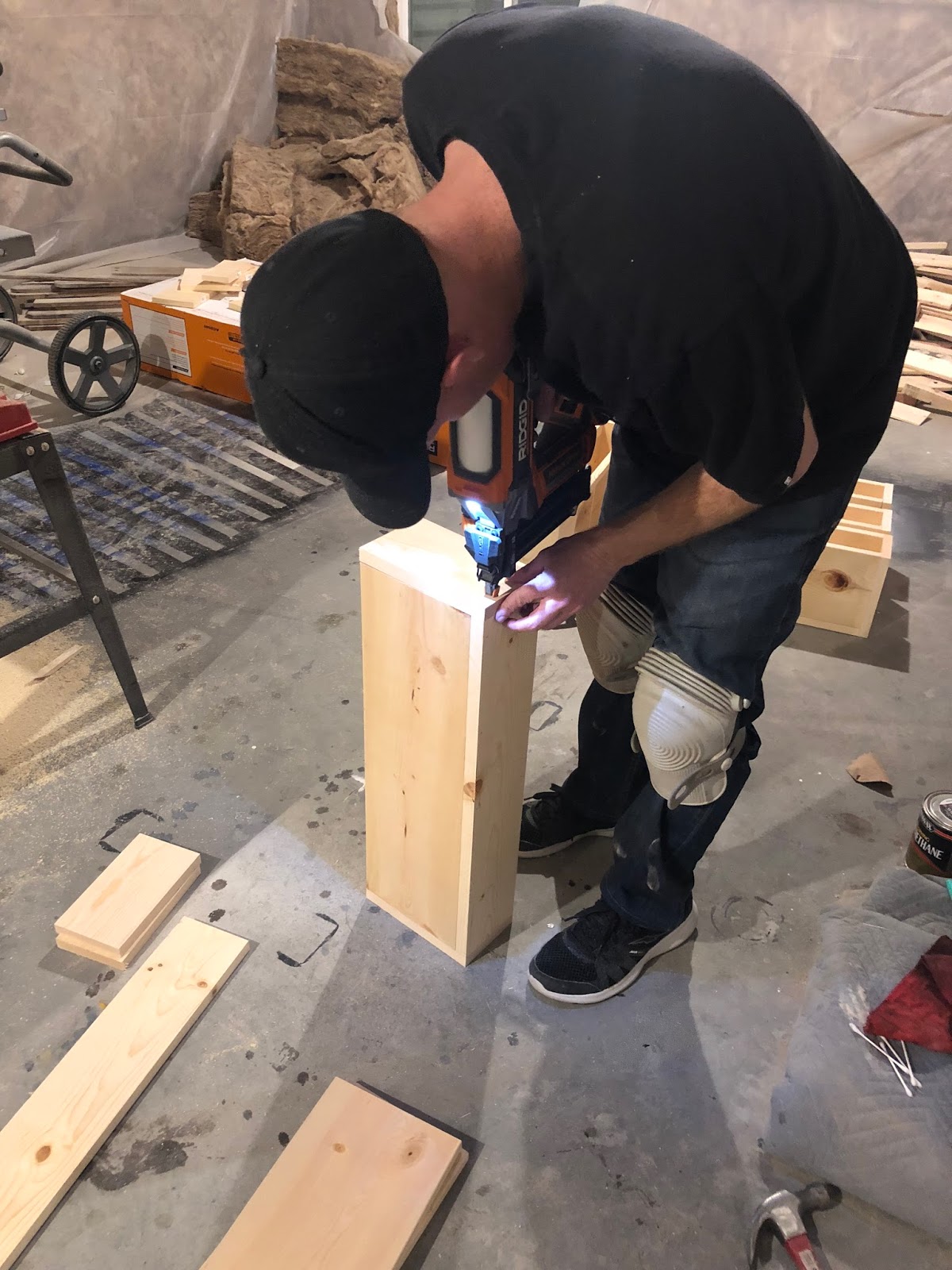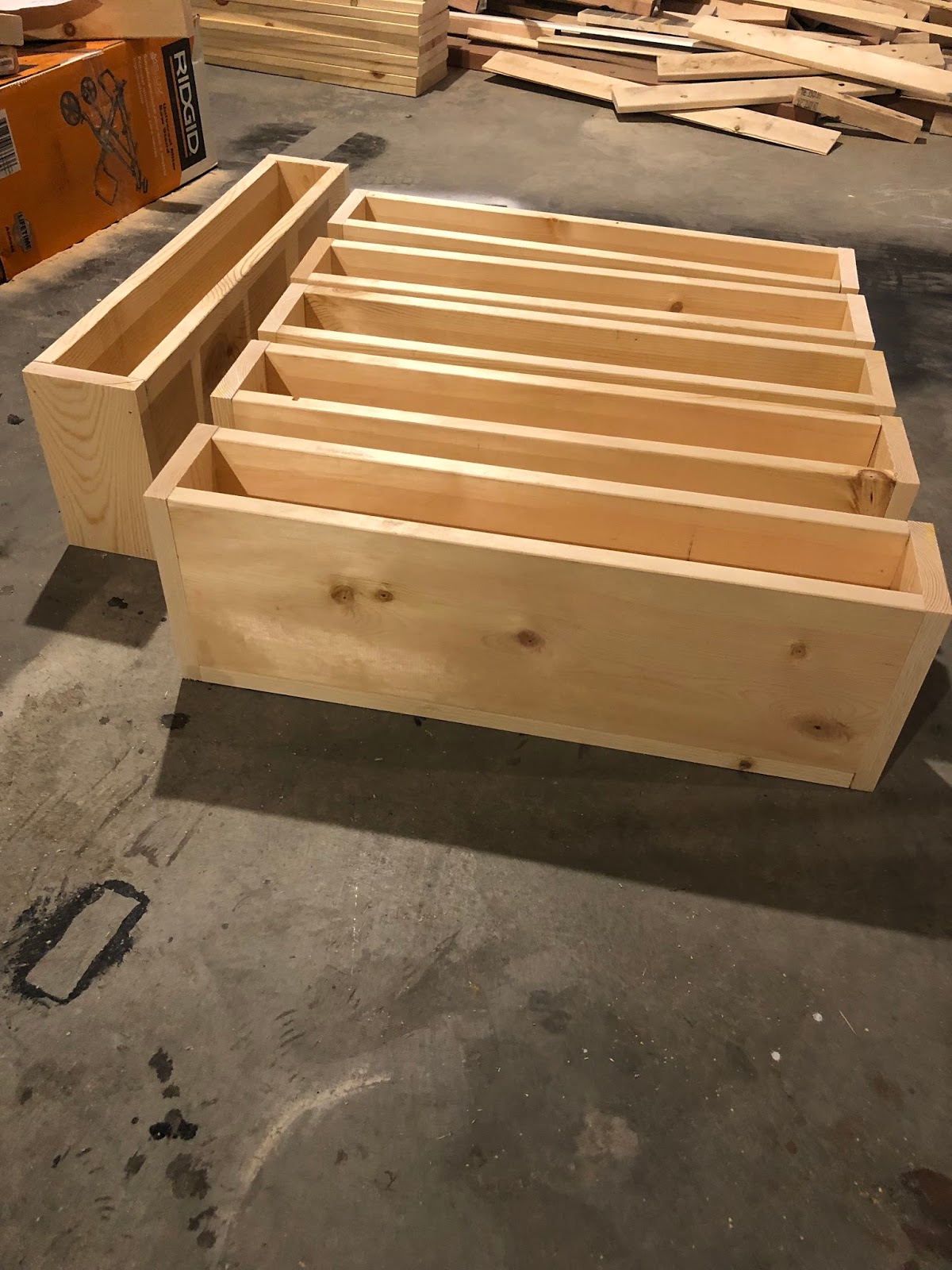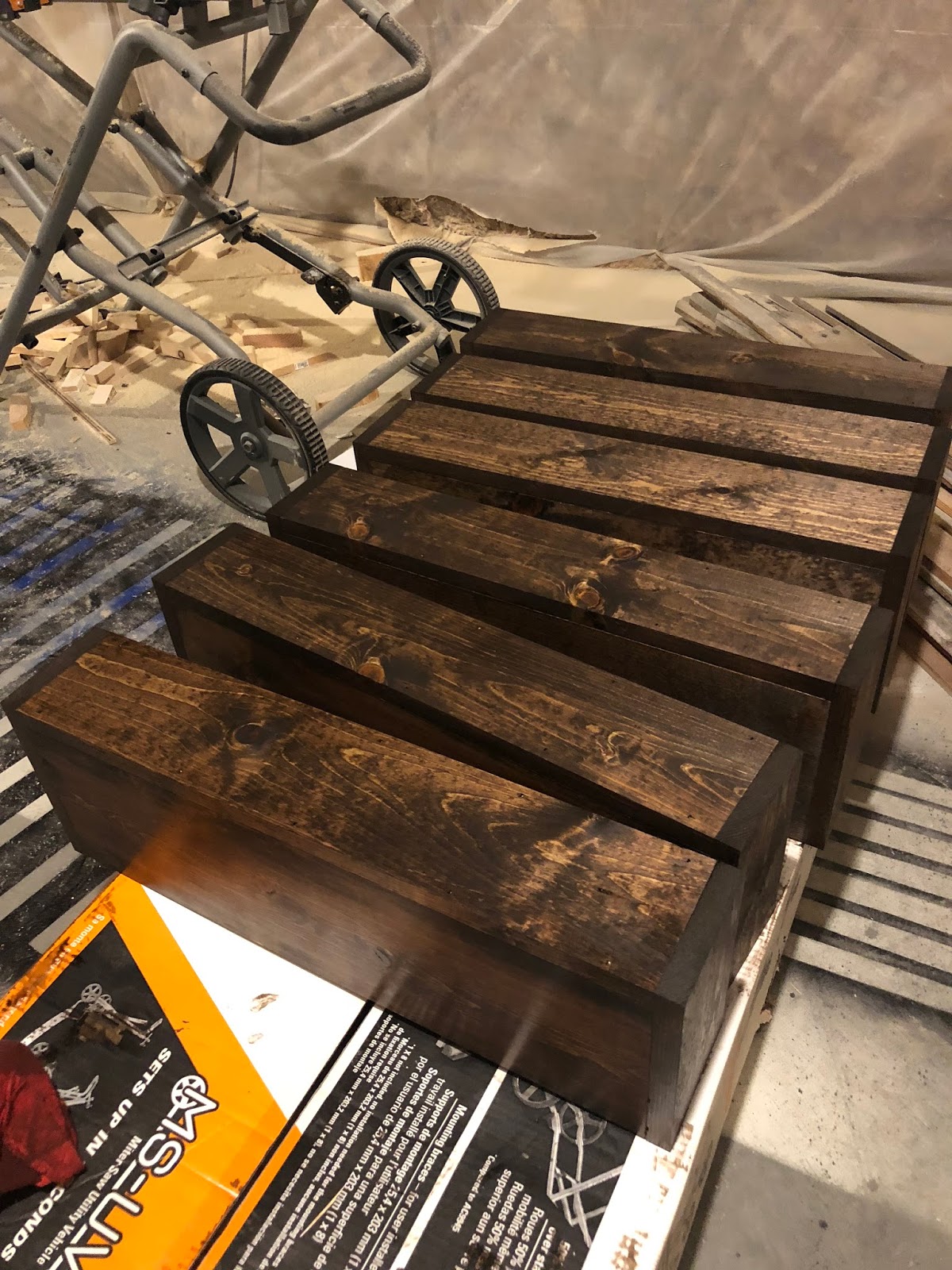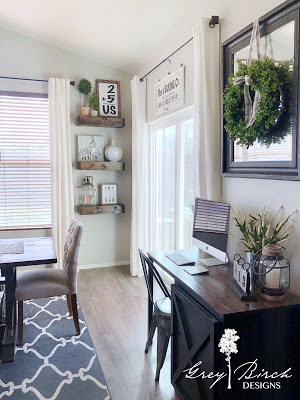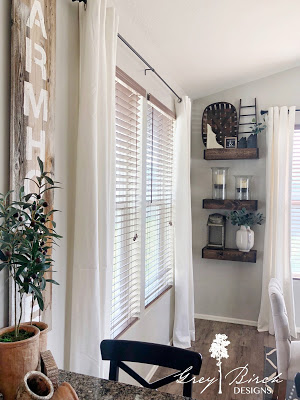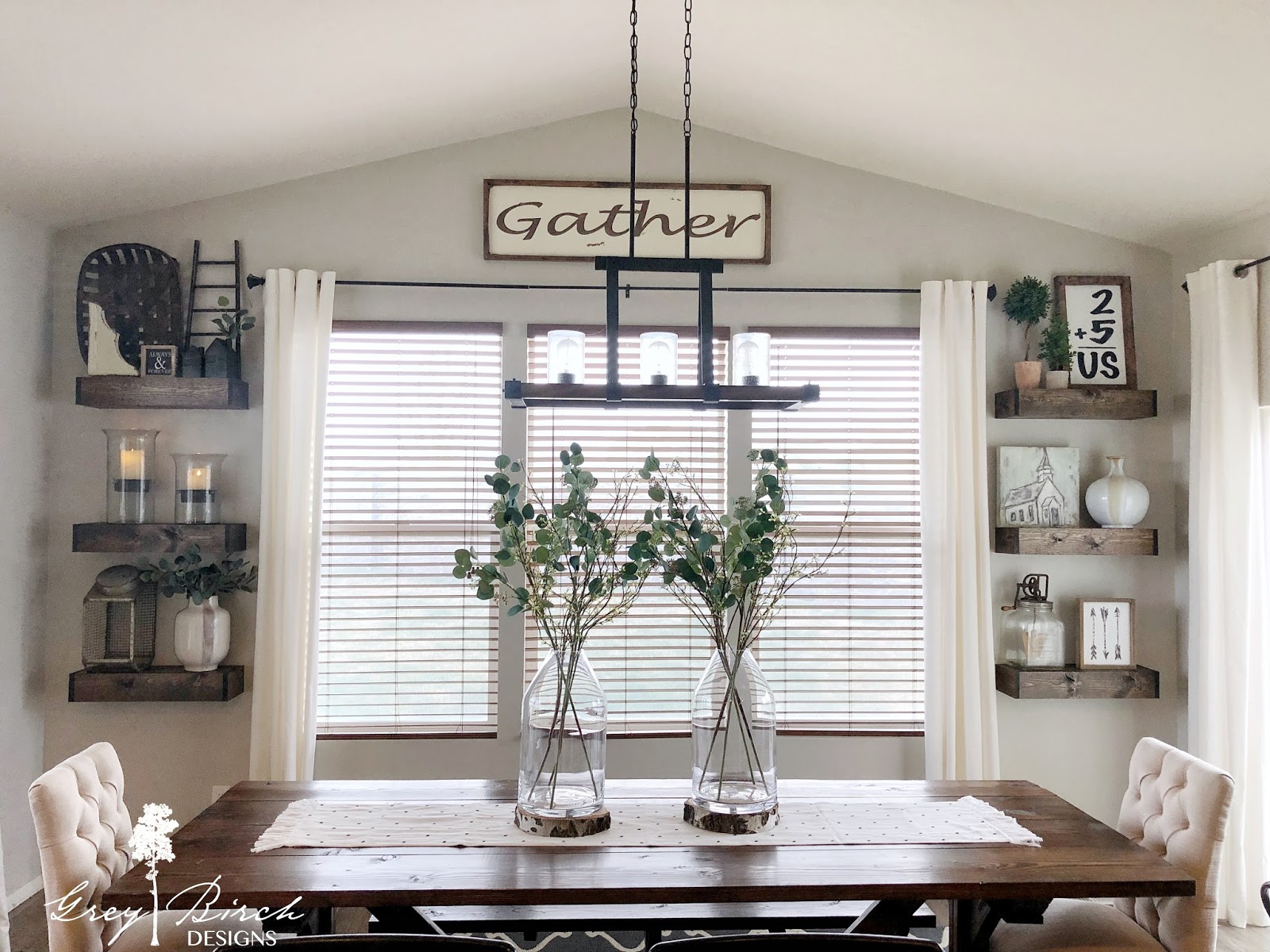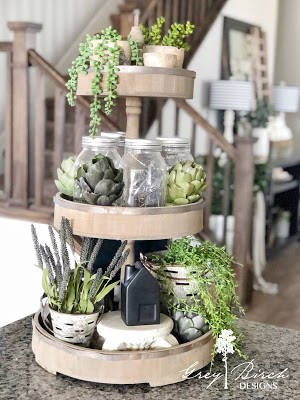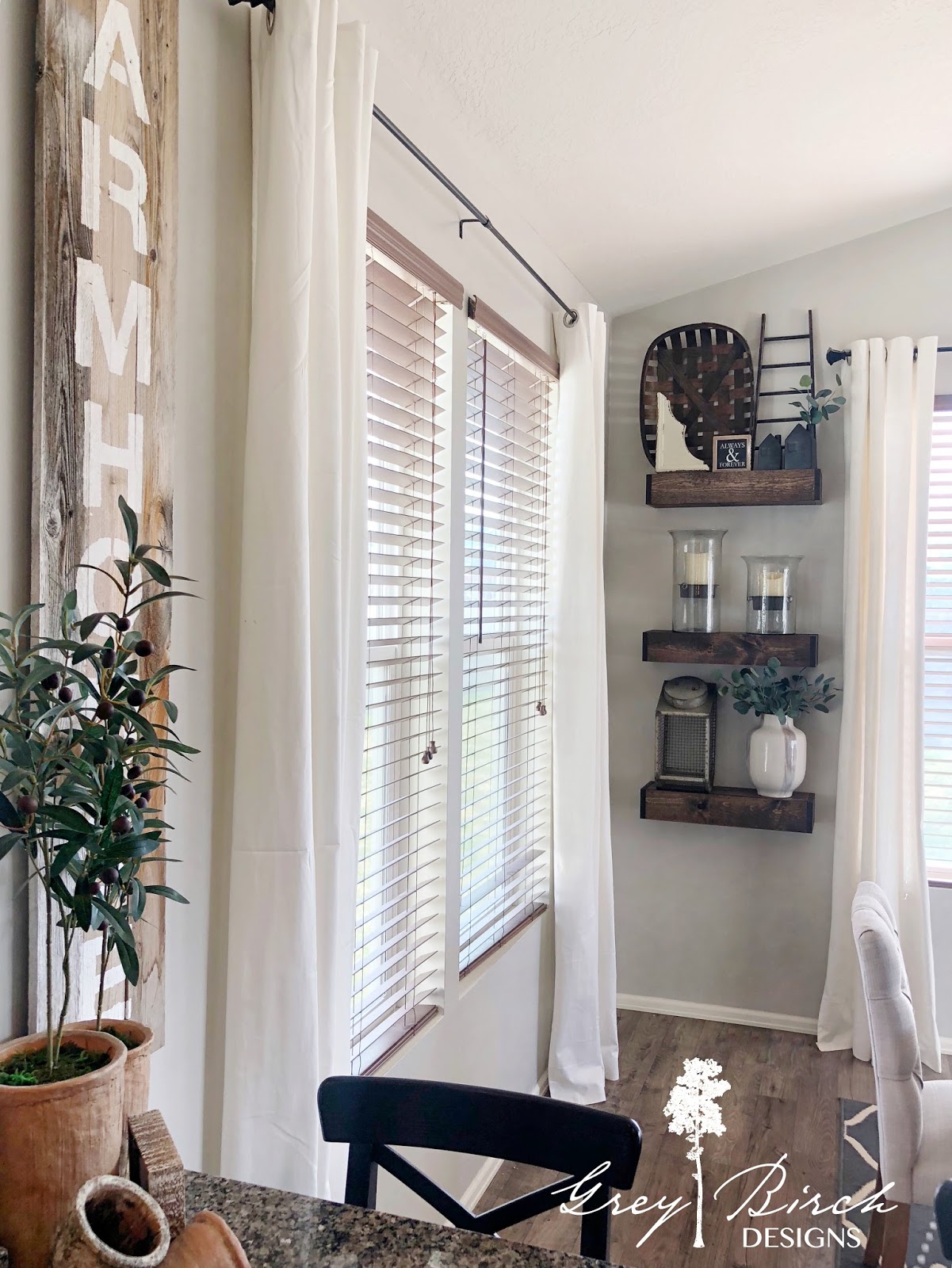I love this project! It was so easy and they make a beautiful statement that is easy on the budget too! I looked into buying floating shelves before but ran into a few problems: First, I needed a unique size. Second, the ones I found were pricey and I needed 6!! That’s when I decided that we needed to build them ourselves. I’m so happy with how they turned out and we were able to build all 6 for less than the price of buying 1!!! These are my favorite kind of projects. Here is our quick, easy tutorial so you can make some too!
Supply List
Step:1
The first thing you need to do is determine where you want the shelves and use a stud finder to mark the studs on your wall. The shelves are not heavy but I do not recommend securing them to just drywall. Once you have done this you can start building the cleats. They will be hidden and attach to the wall and what your shelf will slide on to. Make each cleat out of two short and one long piece of 2″ x 3″ stud. The total width of your cleat should be about 1.5 inches less than the desired width of your finished shelf. You can glue/nail or screw them together. Remember these will be hidden so they don’t need to look perfect.

Step:2
Mark the desired location of each cleat on the wall so they are equally spaced and level. Secure the cleats to the wall using screws long enough to reach into the studs – I recommend 3″ screws. Remember to pre drill your holes to avoid splitting the wood.
Step:3
Once you have installed the cleats you can start building the shelves. You are basically building a simple wood box that is missing one side. Cut the top, bottom, and face boards all to the same length. This length should be approximately a half inch longer than the width of your cleat (so the shelf will easily slide on). Secure the face board to the top and bottom boards as shown in the picture below. I recommend using glue and 1.5″ brad nails.
After the 3 sides are secured, cap the ends using scrap wood. Carefully measure and cut the caps so they fit exactly. Secure the caps with glue and 1.5″ brad nails.
Step:4
Sand the shelves so that the wood joints are nice and smooth. You can hand sand them but I recommend using an electric sander. Next, stain or paint the shelves. We used Minwax Expresso 273 oil stain without a pre stain. We also added 2 coats of satin polyurethane to make the shelves easier to clean and to add a slight sheen.
Step:5
Finally the fun part! Slide the shelves onto the cleats and check for level. If they are not level simply remove the shelf, add a thin piece of wood or folded paper to the top of the side of the cleat that is too low, and replace the shelf. Lastly, secure the shelf to the cleat with several brad nails to hold it in place.
-Grey Birch Designs-





